JEFFERSON PARISH, La. — The school year ended at Washington Elementary at 2:35 p.m. on a hot Tuesday afternoon in May, but one hour later, 9-year-old Malaysia Robertson lingered outside.

She had spent most of her life at this small public school in the New Orleans suburb where she lives with her grandmother, but when she returned to school this month, it had closed. Like thousands of other students in Louisiana’s largest school district, she has been shuffled to a new campus in a consolidation plan that affects nearly one in 10 of the district’s Black students, like Malaysia, a disproportionate number.
On the last day of classes, she didn’t want to say goodbye.
“We were running down the hall, crying and everything,” Malaysia said later, remembering her final day of third grade. The parking lot remained filled with students, families and teachers well past 4 p.m., sharing hugs as they scattered from the campus for the last time.
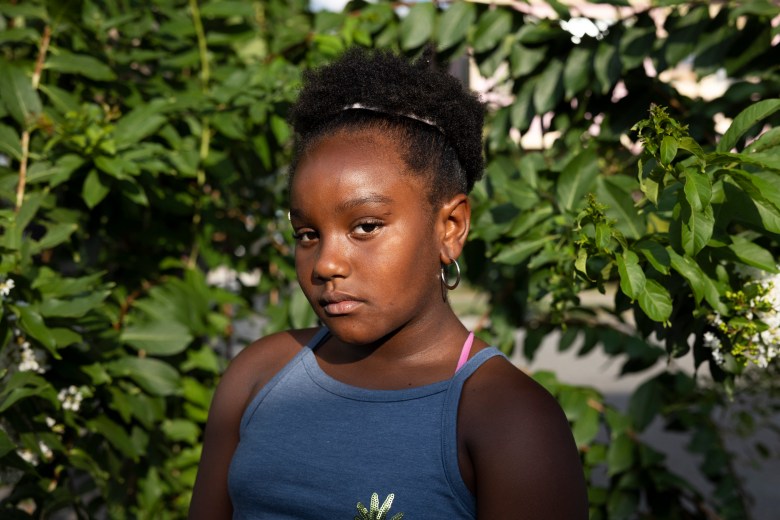
The school board’s decision this spring to permanently close six schools has rocked Jefferson Parish, where the number of students enrolled in public schools has dropped by nearly 10 percent since the pandemic began. The decline exacerbated the district’s nearly decade-long struggle to revive its enrollment after Hurricane Katrina, and district officials have said the closures are the necessary response to its shrinking student body. District data show that last school year, approximately 1 in 3 available student seats remained unfilled, and several buildings housed fewer than half the number of students they were initially built for.
“We have schools that are underutilized — that’s a fact,” said school board Vice President Derrick Shepherd at the April vote. “Math cannot be changed.”
The district has redrawn its map to redistribute its students, requiring many to travel out of their neighborhoods and farther from home. Officials have said the new maps will make bus transportation more reliable, and no teachers will lose their jobs. But the decision has brought ire from community advocates and civil rights lawyers, who say the closures are not only harmful to families like Malaysia’s, but discriminatory too.
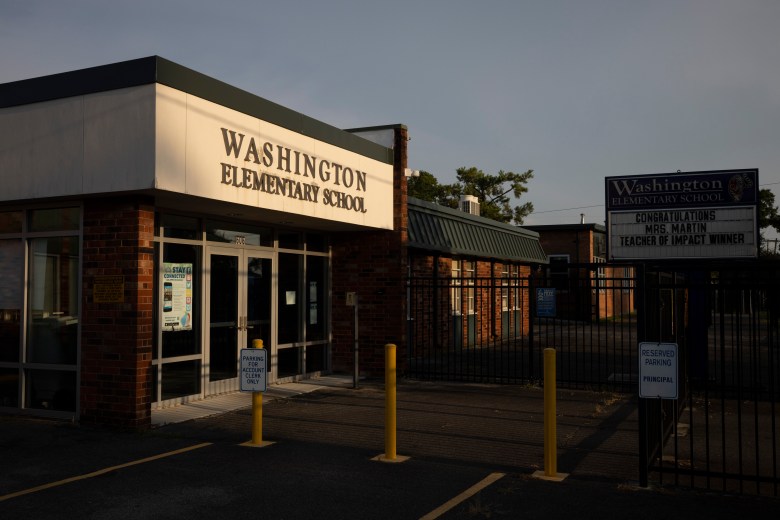

Though white students make up nearly a quarter of the district’s enrollment, they represent only 12 percent of the students affected by the closures, according to state enrollment data. The plan the school board approved, which weighed which schools had the most empty space and inadequate facilities, closed two of its top-performing and majority Black and Hispanic high schools.
As a result, hundreds of Black and Hispanic students will be shuffled to lower-performing schools next school year — an echo, to some families, of the district’s segregated and racist past.
“Who is going to benefit from this whole process? It’s not the Black and brown children,” said Debra Houston Edwards, 77, who graduated from Washington over six decades ago and began working for the district in the 1980s, one of the few Black administrators at the time. “There is no equity in what is going on.”
Shepherd and board president Ralph Brandt did not respond to requests for comment for this story. In an email, the district’s communication director pointed to an online information page about the closures but did not respond to further questions.
Related: Nearly all the seniors at this charter school went to college. Only 6 out of 52 finished on time
The nonprofit Southern Poverty Law Center has filed a civil rights complaint with the Department of Education alleging that the closures discriminate against students based on race and that the district failed to share information about the closures with families who speak limited English. A second complaint from the SPLC alleges that the closures are part of a trend of pervasive discrimination against some students based on race, as well as other attributes.
The department has not announced that it has opened an investigation into either complaint.
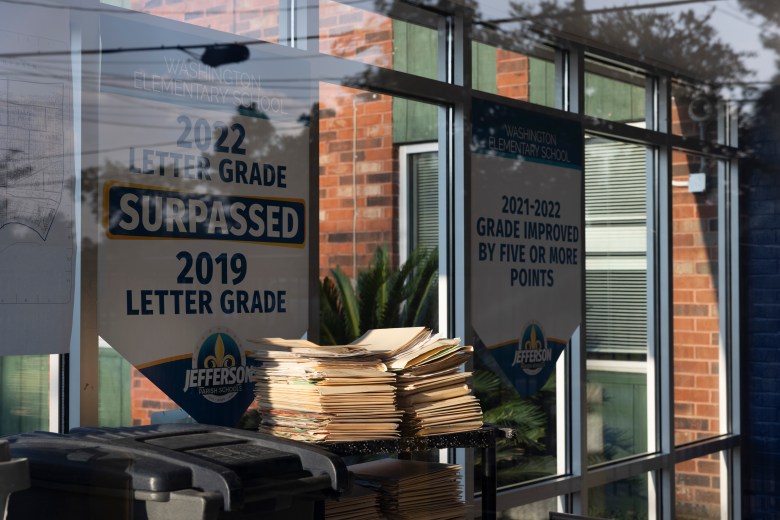
In the meantime, experts worry that districts across the country may soon face a similar problem. More than one million students nationwide did not return to public school after the pandemic. Some enrolled at private schools, others began homeschooling, and still others seemingly disappeared, according to Thomas S. Dee, a professor at Stanford’s Graduate School of Education. Amid declining birth rates, the Education Department estimates that national public school enrollment will drop by 5 percent or more by 2031 — a sharp change after decades of increasing enrollment.
“There’s going to be a reckoning for many school districts that haven’t acknowledged their new reality,” said Dee, who has studied the exodus from public school districts. For many, he predicts, that will mean considering school closures.
That debate will not only be about whether and how to close schools, but also about which groups of students will bear the burden. Already, Black and Hispanic students have disproportionately taken the brunt, leaving researchers and advocates concerned that the nation’s declining public school enrollment — and the closures that will likely follow — will exacerbate inequities in public education.
“Who is going to benefit from this whole process? It’s not the Black and brown children. There is no equity in what is going on.”
Debra Houston Edwards, 77, a Washington Elementary graduate and former Jefferson Parish schools administrator
“The next 10 years is going to be full of these kinds of stories,” said Douglas N. Harris, chair of the economics department at Tulane University and director of the National Center for Research on Education Access and Choice. Through an analysis of nationwide school closures and restructuring trends over the past 30 years, Harris found that schools with a higher percentage of students of color were more likely to close than those with more white students.
Sometimes, Harris said, that’s because of historical inequalities, when schools serving more students of color have received less long-term investment, resulting in lower test scores and more dilapidated buildings. That can exacerbate their enrollment loss and make them seem, from a financial and performance standpoint, like a more sensible choice to shut down.
But even when Harris and his co-researcher compared only schools with similar enrollment and performance levels, those with more students of color and more low-income students were still more likely to close. Previous research from Stanford’s Center for Research on Education Outcomes showed similar results, finding that among low-performing schools, those with a greater share of Black and Hispanic students are more likely to be closed than those with more white students, even if they ranked similarly.
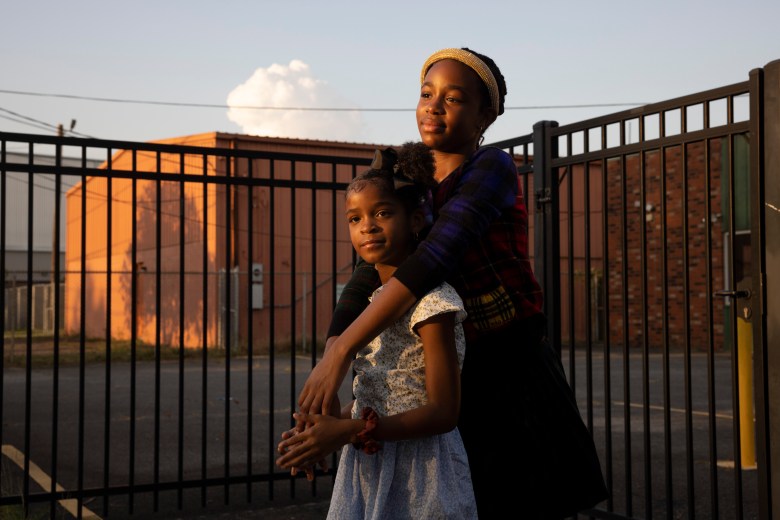
To Malaysia’s aunt Cheryl Earl, the board’s decision has been devastating. Her eldest daughter transferred to Washington two years earlier, and her younger daughter started there in first grade just last year. Like Malaysia, her girls have thrived at the 240-student community school.
Before transferring to Washington for fourth grade, Earl’s older daughter, Ce’Vanne Ursin, had told her mother she hated school. “She couldn’t wait til she made it to the 12th [grade] to drop out,” Earl recalled. But at Washington, Ce’Vanne’s outlook completely shifted. By fifth grade, she had been selected for the school’s gifted and talented program. And at the end of the school year, she was named Mistress of Ceremonies for the final graduation, a coveted position.
“I used to think I was dumb, but I’m really not,” said Ce’Vanne, who is now 12 years old. “Washington made me feel comfortable. It made me feel like everyone in the school was my friends and family.”
Ce’Vanne said she felt lucky to be part of Washington’s final graduating class. But the closures meant her 8-year-old sister, CanyonSunday, wouldn’t have the same experience. Instead, the district reassigned the rising second grader to the same school where Ce’vanne had her bad experiences before Washington. Their mother said she is too scarred by Ce’Vanne’s time at that school to send her youngest back there and decided to enroll both girls at a nearby Catholic private school. The district will lose two more students; the family will lose their entire school community.
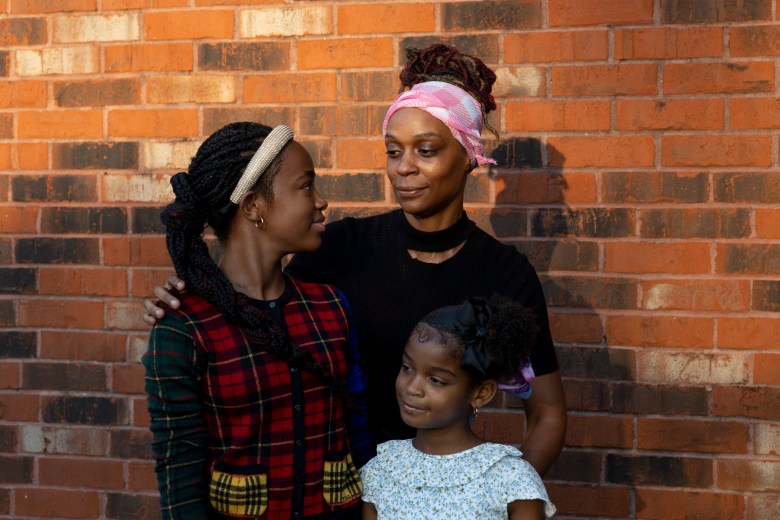
When schools close, the ripple effects play out for years, according to Molly F. Gordon, previously a research scientist at the University of Chicago Consortium on School Research. Students’ academic performance often suffers, some families opt to leave as their neighborhoods become less desirable, and important histories are erased.
After Chicago closed nearly 50 public schools in 2013, Gordon and her team followed the outcomes of students who had been affected. Even before the closures, during the year they were announced, reading and math scores of affected students took a hit, putting them months behind students whose schools would remain open. Though the students’ reading scores eventually rebounded, the effect on their math scores persisted for four years.
“Students coming in from the closed schools felt like they lost something, because they did,” said Gordon, now a senior research scientist at the University of Chicago’s National Opinion Research Center. “They were grieving.”
Related: When the waters rise, how will we keep schools open?
Chicago’s closures were meant to save the district money and close low-performing schools, where almost exclusively Black and Hispanic students were enrolled. Officials promised that the move would serve those students by placing them in better-performing schools. But, a decade later, many of the advertised benefits of the nation’s largest mass closure to date never materialized, an investigation by The Chicago Sun-Times and local radio station WBEZ found. Students at schools that closed did no better academically than those at similar schools that stayed open, and they graduated at slightly lower rates than students at comparison schools, well below the district’s average. And though the move did cut costs, the savings were likely much lower than officials had originally estimated.
The question that remains is one that Marguerite Roza, director of the Edunomics Lab at Georgetown University, gets asked a lot: With resources stretched, enrollment numbers down, and closures on the table, what should districts do?
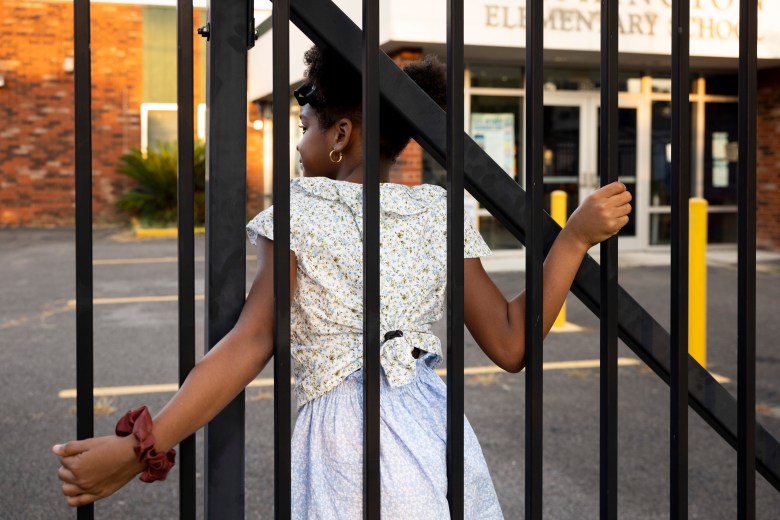
Roza stresses two key factors as essential to minimizing the disruption — planning ahead and prioritizing performance. Closing schools should, in essence, benefit all students in the district, freeing resources to spend on more staff and programming. But to ensure that’s the case, districts must pay special care to the students they relocate by transitioning them to better-performing schools and transparently conveying the rationale for the move to families.
Yet in Jefferson Parish, state performance data shows that hasn’t been the case. Though elementary school students will be absorbed into higher-rated schools, high schoolers face a different fate. The new plan shutters the district’s second- and third-highest performing high schools — a kind of move “that just defies logic,” Roza said.
One of those schools is Grace King High School, where longtime Jefferson Parish resident Lillie Magee’s two grandsons completed 10th and 11th grade in May. The school was mostly made up of Hispanic and Black students, like Magee’s grandsons, and everyone seemed to get along, she said.
“There’s going to be a reckoning for many school districts that haven’t acknowledged their new reality.”
Thomas S. Dee, a professor at Stanford’s Graduate School of Education
Magee had felt like her grandsons, whom she took care of, were safe within the school’s walls. She knew their teachers and former coaches, and had attended football games full of passion and school pride. Now, she worries that reassigning many Grace King students to their former rival high school will result in violence and fighting. Her boys have lost the school they knew, and she has lost the community she trusted to keep them safe.
“How they treated us, it’s just so unfair,” Magee said. The school her eldest grandson will attend next year is ranked second-worst in the district by performance.
Related: Inside the Christian legal campaign to return prayer to public schools
Back at Washington Elementary, the buildings now sit dark and empty, the grass outside overgrown and littered. One month after the closure, a fire tore through the building that housed the gymnasium and cafeteria, leaving debris strewn over the long tables where teachers had hosted a graduation breakfast weeks earlier. Now, the windows remain boarded up, the gates outside locked.
The timing of the blaze, which police said appeared to have stemmed from an electrical fire, left many community members suspicious. The district now plans to sell the site off, allowing the future buyer to restore or raze the school.
Debra Houston Edwards, the former district administrator, hopes that at least the buildings will be saved for their historical significance so they can continue to serve as a community hub.
Amid declining birth rates, the Education Department estimates that national public school enrollment will drop by 5 percent or more by 2031 — a sharp change after decades of increasing enrollment.
In the early 1930s, Edwards’ grandfather and five other men who lived on the parish’s east bank of the Mississippi River petitioned the school board to open a high school for Black students in the area. But the board told them it was their responsibility — they would have to buy the land and cover part of the construction costs. In response, the community collected funds door to door. In 1936, it became the first school on the east bank where Black children could receive an education beyond the eighth grade.
“Nobody else had to do that but us,” said Edwards, who has preserved the school’s history in old newspaper clippings and fading photographs. “And so here we are again, going back through the same process.”
Earlier this month, Edwards and a group of community members offered to buy the school for $1, essentially requesting the school board donate the land — a site “for which our ancestors have already paid,” the group wrote in a letter to board president Brandt.
But the group said it has received no formal reply. In a statement to local news outlets, Brandt said the board is “legally required to seek fair market value” on any property it intends to sell.
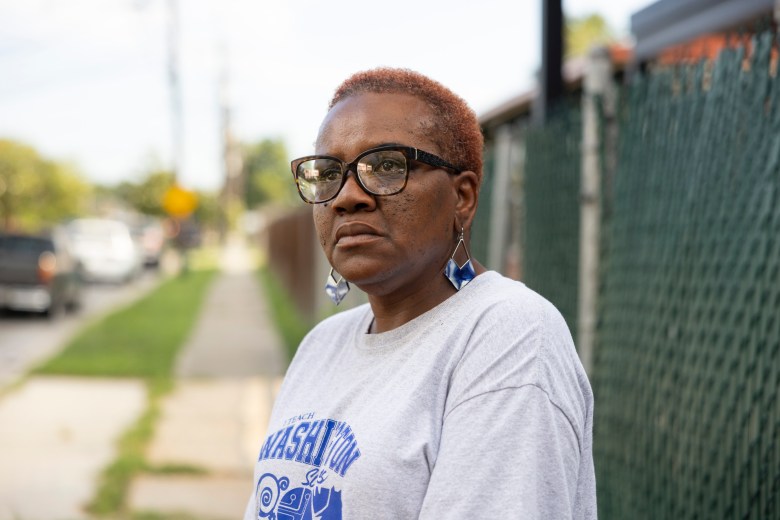
As for Malaysia, when she pictures the next school year, she says she feels hopeful. Many of her teachers will move to her new school as well, and several of her old classmates will join her in the unfamiliar building.
But to her grandmother, Angie Robertson, it’s a different world — a neighborhood they don’t live in, a community they have not been a part of.
“You had teachers over there,” at Washington, “that were just like family,” said Robertson, who also taught in the school’s Head Start early learning program. “To me, I felt like it was the kids’ home away from home.”
Now, that home has disappeared.
This story about the impact of school closures was produced by The Hechinger Report, a nonprofit, independent news organization focused on inequality and innovation in education. Sign up for the Hechinger newsletter.



